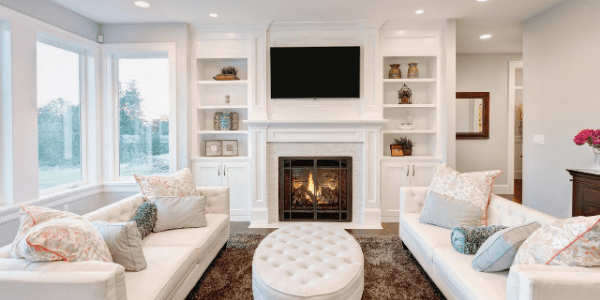Guide to Optimized Online Home Staging
How To Make The Most of Home Staging Online
A 2019 survey revealed that 83% of estate agents agree that home staging made it easier for buyers to envision a property as their own. The practice of revamping, repairing, and styling a house to highlight its best features is proven to attract a larger audience and a quicker sale.
While home staging in the real world requires practice and know-how, taking it online poses a different set of challenges. You need to connect with a potential buyer digitally, convincing them in a few clicks that you’ve got a property they’ll love. This isn’t always easy, but as the world moves increasingly online and COVID-19 has curtailed real-life viewings, it’s fast becoming an essential skill.
If you want to get optimal results from your virtual showings, keep the below advice in mind.
Focus on the Visual Impact
The visual presentation of the space is always a key element when it comes to home staging. But when you’re thinking of prospective online buyers, remember that they won’t get to smell the flower arrangement in the hall or the cookies baking in the kitchen.
They also won’t be able to hear birds singing in the garden or feel how warm the afternoon sun makes the living room. You’ve got to capture all of that in the photographs and videos that you post.
Create a clean canvas
Before you begin taking photographs, remove any clutter to avoid images looking messy. Then, make sure all surfaces are clean and shiny, carpets are vacuumed and windows washed. These little touches can go a long way to making a home photograph well.
Screen size considerations
When taking photos always remember that perspectives and proportions may differ across device screens. As you work, check how the images come across to ensure they provide the ideal, attractive showcasing of a space.
You might need to rearrange the room and move pieces to make sure that key details are accentuated for laptop, tablet, or smartphone viewers.
Capitalize on color
Color is incredibly important for online staging. While bright feature walls may reflect the seller’s personality, they detract from a room’s assets when photographed. Wherever possible, showcase neutral tones like beige, white, cream or taupe to provide a clean, crisp palette.
To make your picture stand out, choose one focal point or pop of color. Make it a feature of the house rather than a reflection of personal taste.
There are specific visual considerations with online home staging, but don’t think of them as limiting; they can actually be really helpful. For instance, you can stage each room perfectly, take the photograph, and move on, without having to get the whole property on point at once.
Additionally, you won’t have to worry about getting someone to look after your pets during an open house or be stressed about trying to remove odors from your home. And all the photographs and video walkthroughs can be edited – you’re in complete control of what your audience sees.
Cater to Shorter Attention Spans
The flipside of being able to control the content that potential homebuyers see at all times is that everyone else with an online presence can do the same thing. People won’t be walking through your property, so their attention won’t be completely focused on it.
Think about how often you multitask when online – why would prospective buyers be any different? They may even have other real estate listings open while looking at yours. You’ve got to be able to grab their attention and to do it fast. You’ve got minimal time to make maximum impact.
Don’t post too many images of the same view or feature, since that can make each picture lose its impact. Instead, choose the one that stands out most. And pick out your thumbnail picture with particular care.
As the very first impression viewers get of your home, the thumbnail needs to be eye-catching and intriguing enough to make them want to see more. A good shot of the outside, framed by well-kept plants, is an ideal choice. Equally important are the words you choose for the text in your listing.
You want to grab peoples’ attention as they flip through images, and then hold it with an exciting description. That way, buyers are likely to bookmark your listing and return to it later. Write the first draft of the copy, and then come back to it to edit and polish your words.
Level Up Your Post with Virtual Home Staging
More and more realtors are using tech like virtual reality to take interested home buyers on property tours, and you can achieve similar effects with virtual home staging. This involves using software to edit photographs and make them more appealing.
There are several virtual staging apps and services available. Depending on the one you choose, you can control everything with a do-it-yourself package, pay an expert to handle the job, or select the option that works for you and your budget.
The available functions on virtual staging products include deleting furniture and other objects from photographs, rearranging items, adding new pieces, changing the lighting, and creating 3D tours of the space. This eliminates the need for you to move any furniture, clear up clutter or wait for the perfect sunny day to get the right shot.
These powerful tools make staging in a virtual world a whole lot easier. They let you create your ideal show house with minimal effort and maximum results.
Closing the Deal Online
When well-executed, online home staging provides the perfect platform for potential buyers to see a house in its most positive light. If you can connect with a digital audience and make a lasting impression, you shouldn’t struggle to sell your house quickly. And you’ll sell it at a good price too. Then all you need to do is start packing!
For more tips, sign up for our once-monthly blog newsletter.
Guest Post by Marina Copeland | Editor at HomeStack






